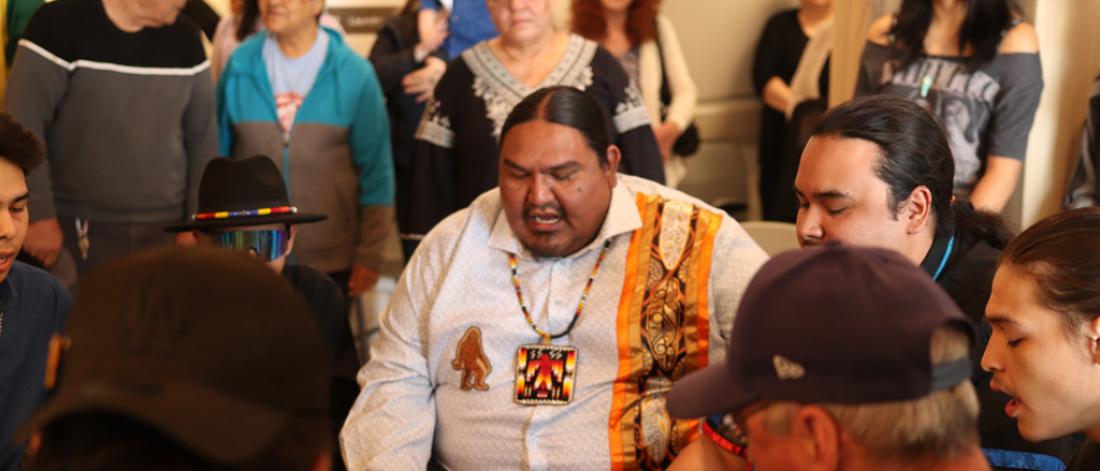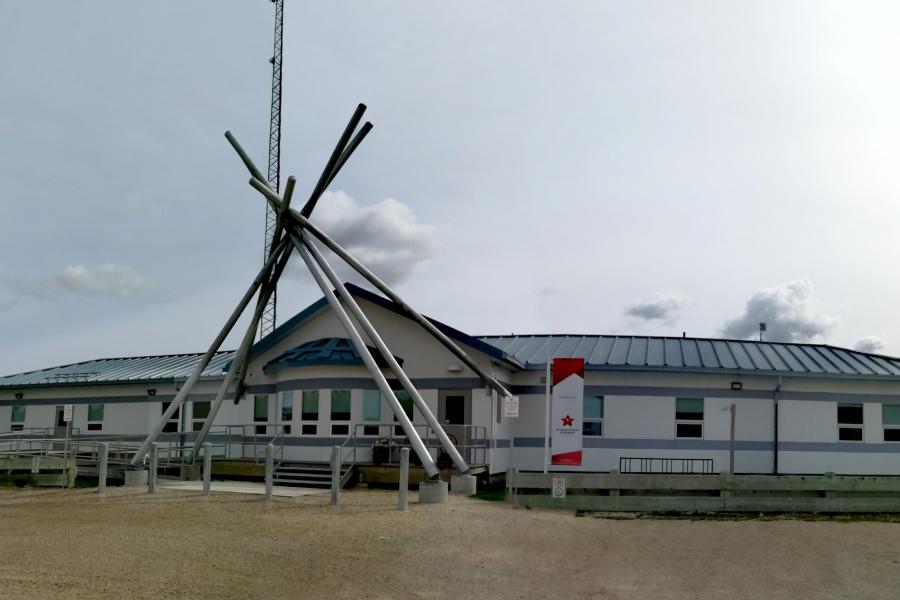Homecoming
As a graduate of the University of Manitoba, you’re invited to take part in Homecoming activities held each fall at both Fort Garry and Bannatyne campuses. It’s a great way to see what’s new with your alma mater!
The University of Manitoba campuses and research spaces are located on original lands of Anishinaabeg, Ininiwak, Anisininewuk, Dakota Oyate, Dene and Inuit, and on the National Homeland of the Red River Métis. More
University of Manitoba
Winnipeg, Manitoba Canada, R3T 2N2


For more information about First Nations partnerships, contact Reg.Urbanowski@umanitoba.ca
Kiga mamo anokimin onji minoayawin – “We will work together for health and wellness” – is a unique partnership between the College of Rehabilitation Sciences and First Nations communities in Manitoba. The goal of this collaboration is to bring the services of the college to the community, based on their self-identified needs and priorities. In some cases, it also develops experiential and online learning opportunities for Grade 6-12 students interested in learning more about therapy programs as a potential career.
Visit the links below to learn more about our partner communities.
Leadership: Chief Roland Hamilton
Population: approx. 1,850
The Bloodvein First Nation is located north of Winnipeg on the east side of Lake Winnipeg, along the Bloodvein River in Manitoba, Canada. This area is part of Pimachiowin Aki, one of the largest intact regions of boreal forest in the world. In 2018, UNESCO declared this culturally and naturally gifted community a World Heritage site.
The community offers various commercial and business services such as a health center, water treatment plant, daycare program and Child and Family Services.
The community is constantly planning initiatives for the growth and development of its children, such as being part of Teach for Canada, and adult education program.
There is higher level of community participation in various community activities. The community’s traditional knowledge guides its vision for economic development and self-sustenance, which includes taking care of its habitat, wildlife, and people.
The College of Rehabilitation Sciences is working with the community on initiatives relating to living well with dementia, wellness and frailty, and housing.
Leadership: Chief Cornell Mclean
Population: approx. 1,851
Lake Manitoba First Nation (Animo-ziibiing) is primarily a wetland reserve, located on the northeast shore of the south basin of Lake Manitoba. This community is working together with five other Manitoba Interlake communities under the Interlake Reserves Tribal Council (IRTC).
The community is warm and friendly, with strong beliefs in the holistic development of its members. The members encourage each other to create a safe, diverse environment that reflects the culture of the community. It offers various services for its people such as hospitals, grocery stores and gas stations.
The community is also committed to provide comprehensive education to its children and has undertaken few training programs that help the youth to develop the skills and tools required to create a pathway into better careers.
The core of the community lies in promoting entrepreneurship, training opportunities, implementing education initiatives, health research programs and consultation processes, on-reserve economic development and social assistance programs.
The College of Rehabilitation Sciences worked with the community to build Zaagate Garden, a playground that is culturally appropriate, safe, interactive, sustainable and accessible year round by children who have accessibility challenges.
“The design is modelled after the four directions of the medicine wheel,” says Debra Beach Ducharme, director of Indigenous health integration for Ongomiizwin, the Rady Faculty’s Indigenous Institute of Health and Healing. “The decking around the arbour will be safe for children in wheelchairs, and they will access children’s activities in each of the four directions.”
The College of Rehabilitation Sciences is also working with the community on initiatives relating to living well with dementia, wellness and frailty, and housing.
The community has also benefitted from being a community placement site for occupational and physical therapy students.
Leadership: Mayor Cristo Spies and Community Administrator Lloyd Flett
Population: approx. 5,000
Kinosao-Sipi (Norway House Cree Nation) is located to the north of Winnipeg along the channels of Nelson River. The terrain is mostly small creeks, rivers, streams and islands.
Historically, it was a major trading port for the Hudson Bay Company and was an important fur trade post in 18th and 19th centuries.
Today, Norway House is a thriving community that is undergoing great transformations. The members are engaged in commercial and subsistence fishing. Other industries that have developed over years are freighting, trapping and boat building.
The community is self-reliant in offering a host of services to its members such as fire and rescue, police, recreational, and medical services.
It is a regional center to the University College of the North and runs a satellite degree program from the Brandon University and the University of Manitoba.
The community has seen a lot of infrastructure and community development since 1990s.
The College of Rehabilitation Sciences has worked with the community to create a forum for suicide prevention, securing funding and services to meet the population’s need for assistive devices and home modifications.
The College of Rehabilitation Sciences is also working with the community on initiatives relating to living well with dementia, wellness and frailty, and housing.
Leadership: Chief Garnet Woodhouse
Population: 2,812 (1,233 on-reserve and 1,579 off-reserve)
Pinaymootang First Nation is a picturesque community located off Highway 6, north of Winnipeg. It is signatory to Treaty 2, signed on August 21, 1871 and the native language is Ojibway.
The members are proud of their rich and diverse culture as well as their spiritual life. They stand together in their beliefs and find strength within their families. The community members support one another to help form a deep kinship.
The community has a long-standing belief in passing knowledge and traditions from one generation to another. With roughly half the on-reserve population being aged 20 or under, sharing cultural knowledge with their youth is all the more important.
The community is involved in long-term service improvements, namely infrastructure projects and environmental plans.
A similar kind of collaborative relationship is between the community and various stakeholders in School, Health, Social and Child & Family Services.
A major step set up by the community is to take care of their young children, especially children with complex needs. They have a strong sense of social responsibility towards their youngest members, and adhere to the philosophy that it takes a community to raise a child.
The Pinaymootang Health Centre is an accredited facility and is responsible for helping the people maintain and improve their health to ensure longevity, healthy lifestyle and the effective use of the public health-care system.
Pinaymootang Health Centre runs a support program for children with complex needs and their families under the Jordan’s Principle initiative titled Niinijaanis Nide, My Child My Heart Program.
The community lacked programming specifically for adult care with similar complex needs. However, occupational therapy students from the College of Rehabilitation Sciences have worked with this underserved group in the community, successfully implementing a youth transition program.
The College of Rehabilitation Sciences is also working with the community on initiatives relating to living well with dementia, wellness and frailty, and housing.
The community has also benefited from being a community placement site for occupational and physical therapy students.
Leadership: Chief Derek Henderson
Population: over 7,000
Sagkeeng First Nation is located in the southern part of Lake Winnipeg. Its name means “mouth of the river.” Historically, the community was called Fort Alexander.
The following seven teachings are the foundation of the Sagkeeng community’s mission and vision:
There exists a strong feeling of collaboration and collective participation among the community.
Most of the successful initiatives in the community are on community planning. The community also holds Annual Treaty Day which community parade along with various enthralling events for children, community events as well as pow wow and fireworks.
The community offers its members a host of services such as child and family services, education, health center, housing, personal care home and social services.
The community, along with its leaders, believe in improving the quality of life and that it is the responsibility of each member to help in the evolution of the community.
The effective administration system ensures that each member benefits from the community’s progress. The Economic Development Office looks after securing economic opportunities for the members and works for community’s long-term economic prosperity.
Under the education initiatives, the community is taking constructive steps to include science and technology, skills development, language and culture in its school system.
It underlines an important goal for the community to support their children during their transition period from school to job market.
The Comprehensive Community Plan focuses on significant areas such as finance, human resources, and service delivery, and strategizes to deliver high quality services to the members.
The College of Rehabilitation Sciences is also working with the community on initiatives relating to living well with dementia and housing.
The College was successful in partnering with other faculties at the UM to support the development of proposal for transitional Housing for persons with disabilities in Sagkeeng.
The community is also benefitting from being a community site for occupational students completing a major project to develop a pilot for programming for people with disabilities in the community.
The college is working with Opaskwayak Cree Nation to develop a living well with dementia project.
The college is working with Lake St. Martin First Nation to develop a housing project.
Strong links with the community are critical in providing quality programming. There are many ways to collaborate with the College of Rehabilitation Sciences, including clinical, fieldwork and preceptor opportunities.
As a graduate of the University of Manitoba, you’re invited to take part in Homecoming activities held each fall at both Fort Garry and Bannatyne campuses. It’s a great way to see what’s new with your alma mater!
Reunions are the perfect way to enjoy a stroll down memory lane and learn what your colleagues have been up to since graduation. Not sure where to start? We can help!
The fund now sits at $500,000, thanks to student contributions, donations and accrued interest. Each year, half of the interest earnings are distributed to student bursaries and half to the Endowment Fund Project Competition.
The College of Rehabilitation Sciences Endowment fund is open to faculty, staff, and students who wish to advance the college’s mission through innovative projects and initiatives.
All students, faculty members, and support staff are eligible to apply for funds. Successful projects may include research, facility enhancements, staff development, or new teaching methods. Any initiative that contributes to enhancing the College of Rehabilitation Sciences will be considered.
For information on how to apply or project inquiries, contact us at cors.info@umanitoba.ca.
The College of Rehabilitation Sciences is committed to upholding the highest standards of practice, both in our community and across Canada. Follow the links below for information and resources from the associations that guide our profession.
College of Rehabilitation Sciences
P304 - 770 Bannatyne Avenue
University of Manitoba
Winnipeg, MB R3E 0W2 Canada